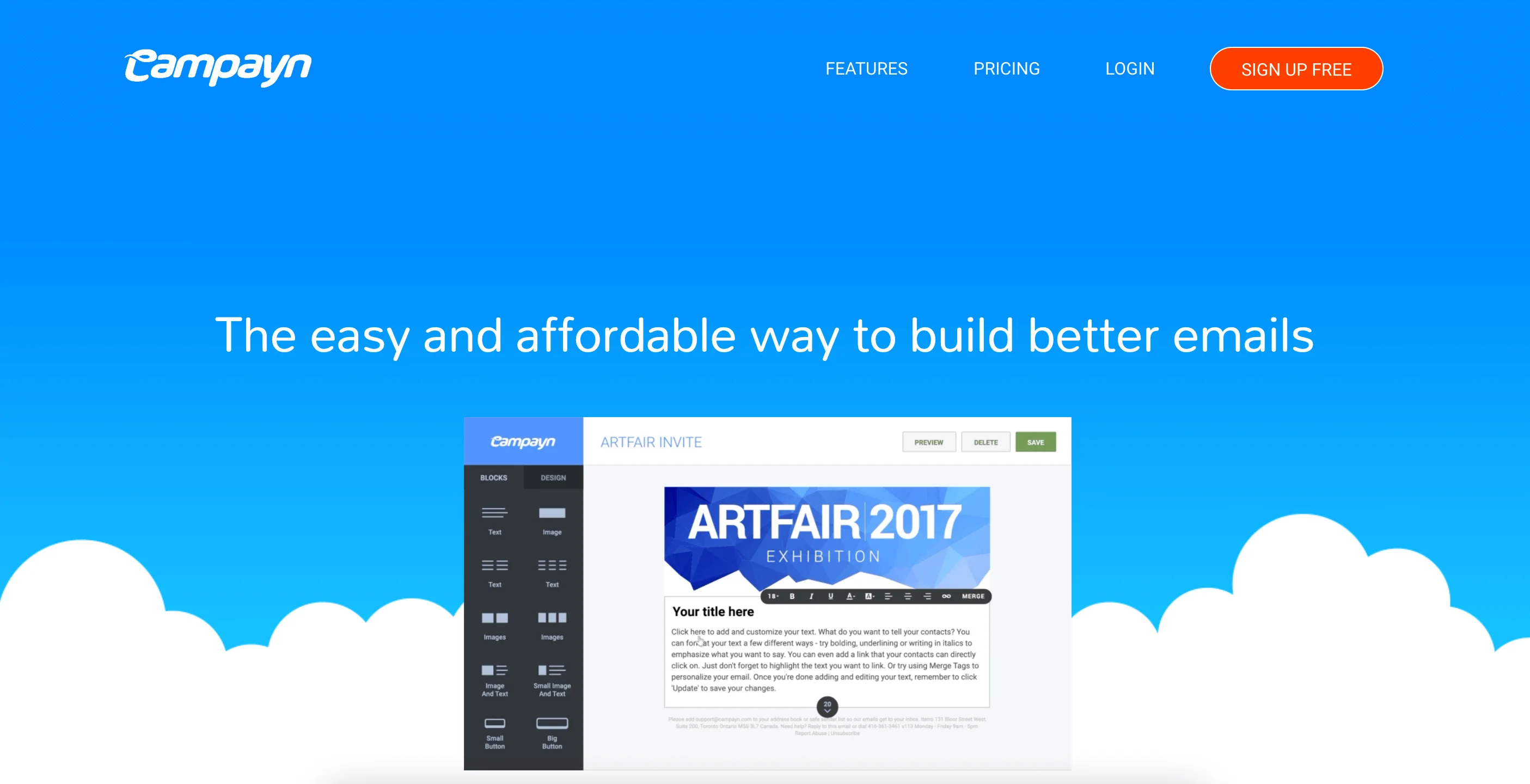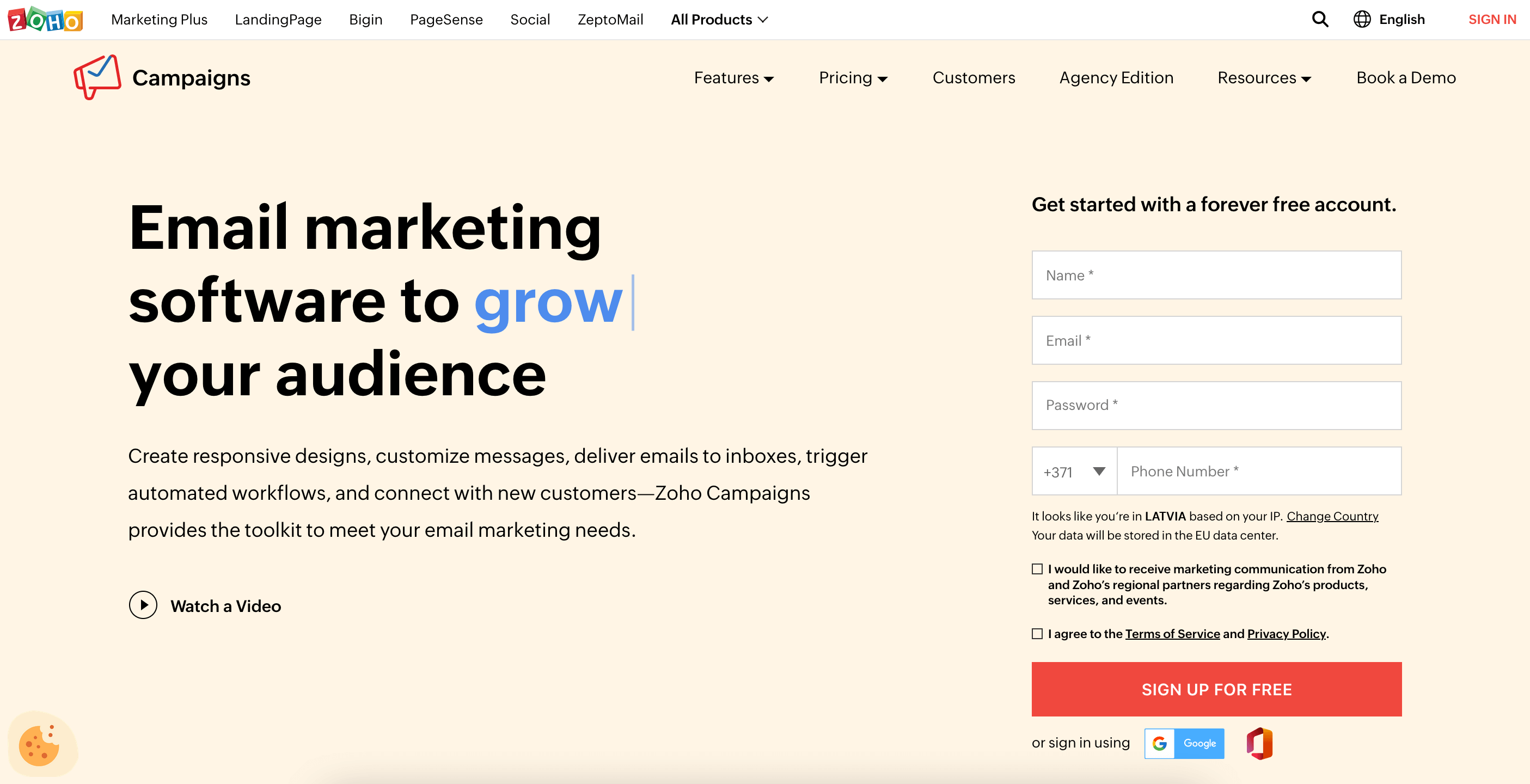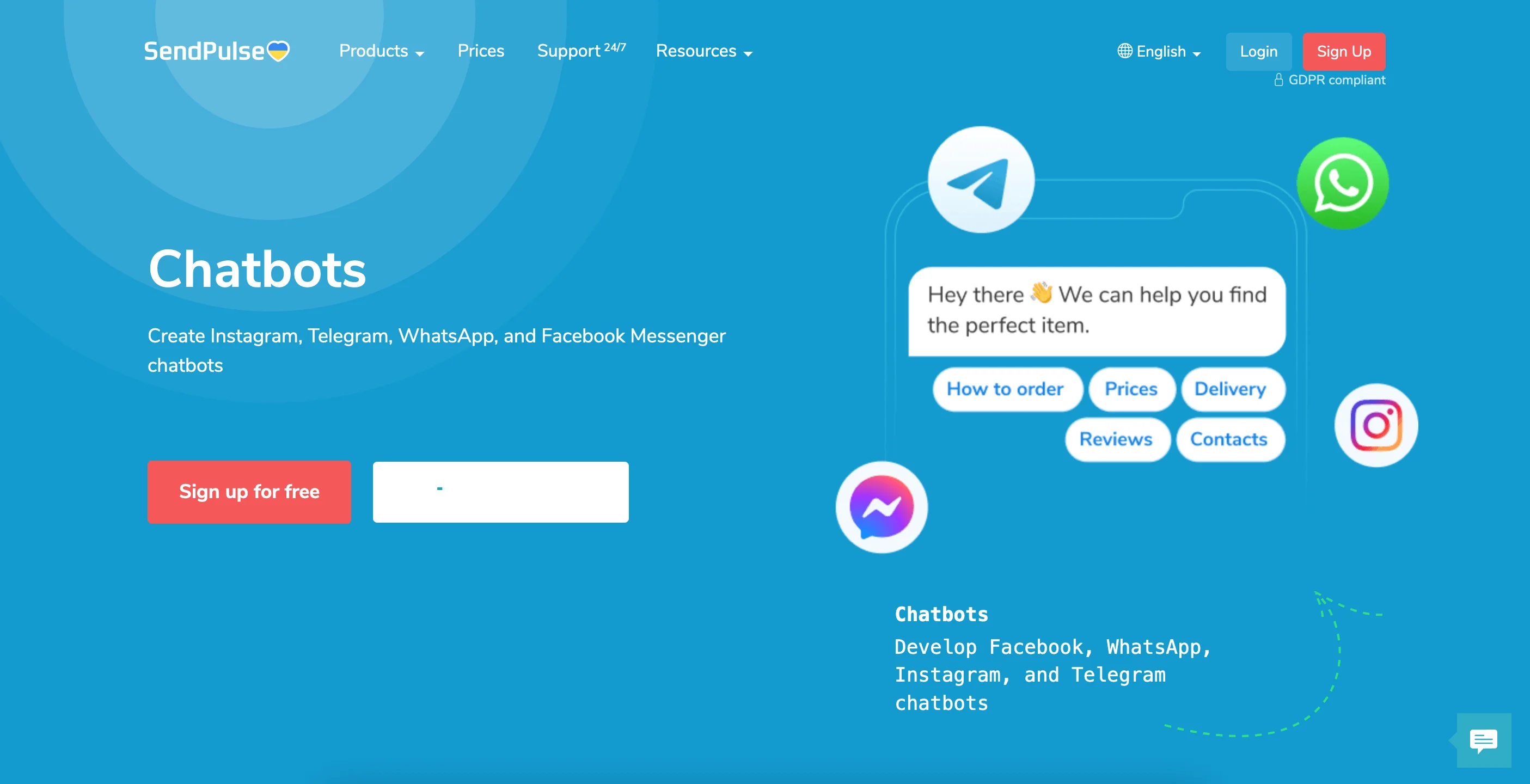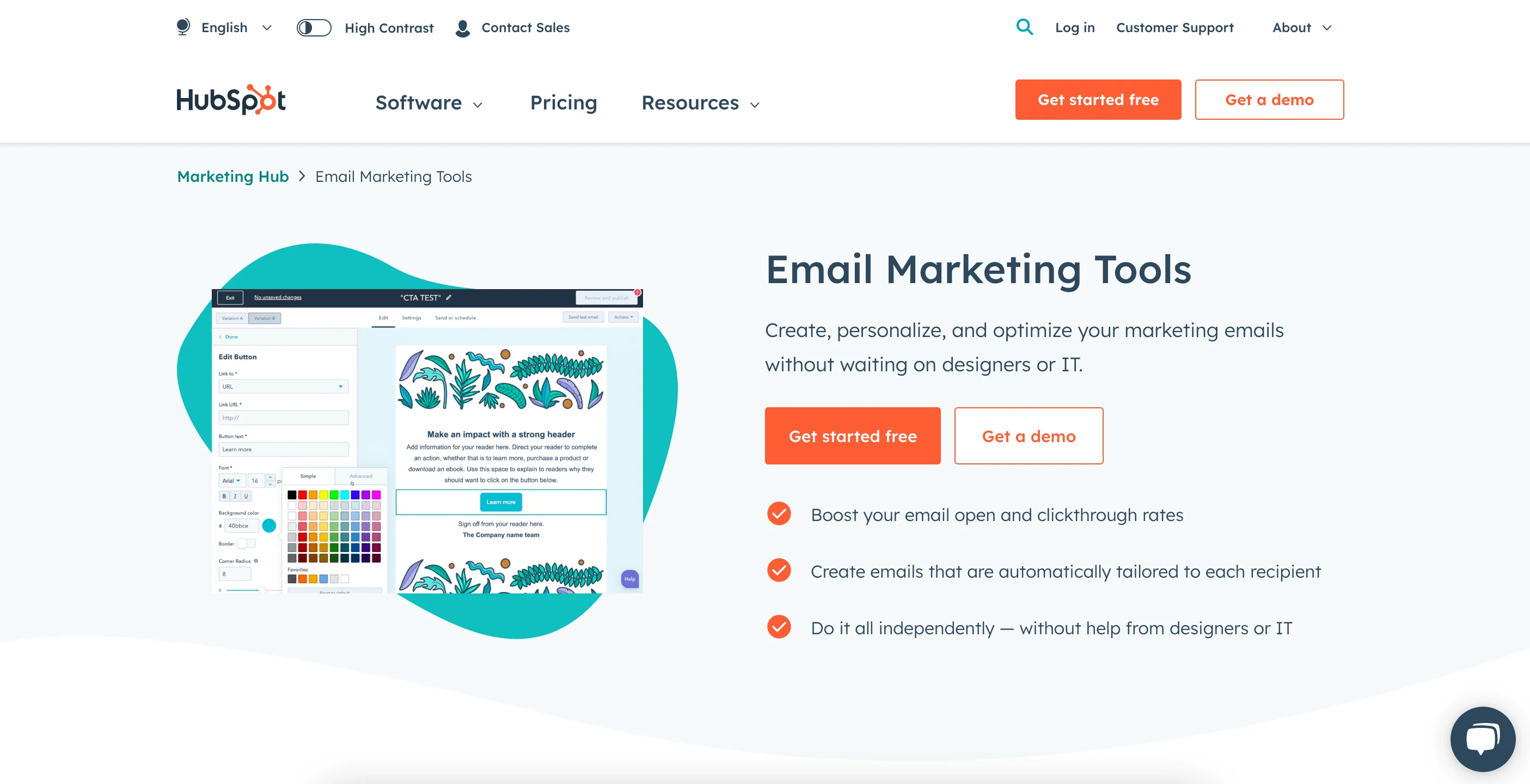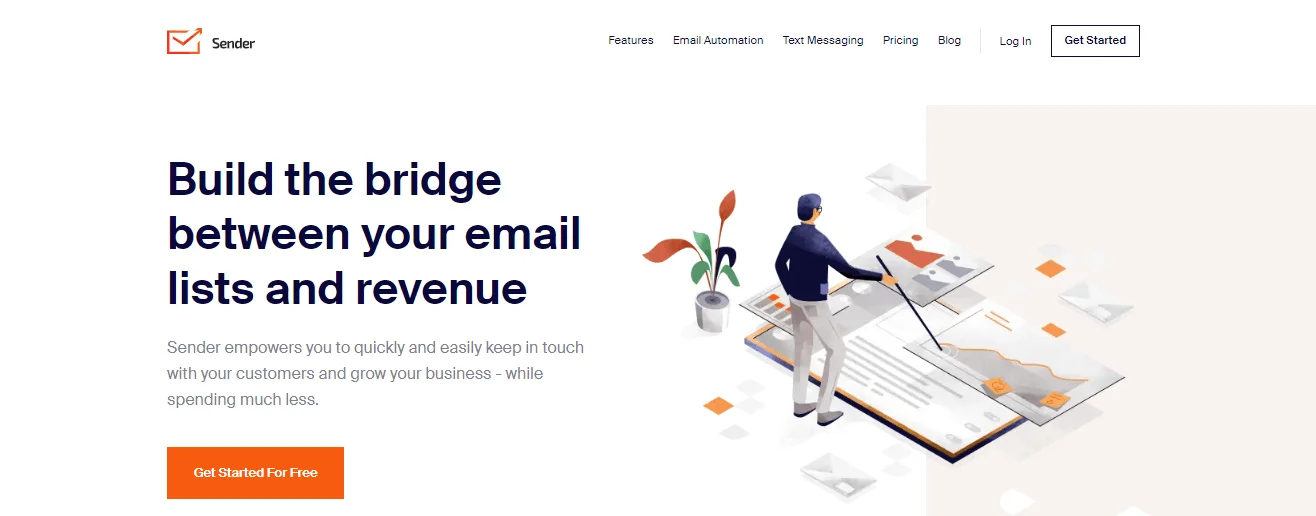Want to save time and money on email marketing? Then a free plan of a good service might be the option for you. Let’s have a look at some of the best free email marketing tools and the features they provide!
We made a list of the best email marketing services that don’t require spending a dime. Read to learn about their functionality and benefits.
Why do platforms provide free plans?
Before choosing a free plan, let’s break down the reasons why platforms provide an opportunity to use their services for free.
- It promotes their services
By providing this opportunity, the platforms attract new customers. Since the users become well aware of a service and its features, they are more likely to purchase a paid plan.
- It doesn’t push people
Unlike free trials, free plans are not pressuring. The users can take their time to learn the platform and get used to it.
- It increases user adoption
Users are less likely to cancel their subscriptions if they are free. So, free plans are also an excellent way to engage your subscribers. Once subscribers get familiar with a platform and its features, they might want to purchase a paid plan.
Why choose a free email marketing tool?
Whether you are short on budget or not, free plans have several benefits and serve multiple purposes. Some of them are:
- Test drive
Even if you intend to purchase a paid plan for your business, you still might want to try a tool out first. Free plans allow you to test a platform to see if it is convenient enough for you and meets your expectations.
You can try several platforms to choose something that works best for your business. You might also use several tools simultaneously: a different one for every sending to compare and contrast the results.
- A starting point for inexperienced users
If it’s your first time launching an email marketing campaign, a free plan is a good way to start. You can experiment with your sending and see the results without spending money on something you’re not sure of. Even if you don’t have many subscribers, you can still try out different tactics and see what is best for you, or use it until the number of your subscribers grows.
What to look for in a free email marketing tool
How do marketers choose an email marketing platform from numerous free tools and apps available? You might look for a certain feature that is crucial for your business. Here are some of the points to consider:
Main features
Usually, free plans have limited features so choose the one that provides everything you need. You can find all the information about the email marketing features on the pricing page of a platform’s website. Some of the features marketers usually look for are email templates, automation, email editor, segmentation, and whether there are opportunities to grow. Check if the platform’s limit is enough for your business campaigns. To do so, identify the number of emails you typically send and the contacts you already have. However, don’t expect too much: after all, free plans can’t be as sophisticated as paid ones.
Subscriber limit
The free plans of email marketing tools and apps usually have a subscriber limit. Make sure the tool’s limit is enough for the number of your contacts.
Email sends
Apart from the number of contacts, you should also check how many emails you can send. The number of email sends may vary depending on the size of your business and your marketing plan. Ensure that the amount of emails is enough for you.
Scalability
Although you are looking for a free email marketing tool, you might want to expand your possibilities in the future. Try to look for a tool that can provide valuable features even when your business grows. For example, if the number of your subscribers increases, you’ll need to send more emails. Or you may want to explore the advanced paid-only features. These can vary from A/B testing to segmentation or analytics depending on the service’s offers. Choose the marketing tool that can account for your business’s needs in the future.
Templates and customization opportunities
An intuitive email editor can significantly ease the marketer’ work. Drag-and-drop interface and useful templates are real time savers. And customization is a good way to make your emails stand out without a designer’s help: for example, add the logo, social sharing buttons, and unique value propositions. Thanks to it, the content of your emails will look interesting and trustworthy. So, check the email editor and see how many templates a platform provides and whether they match your preference.
Segmentation
Audience segmentation helps to divide your subscribership into groups based on various criteria (demographic, geographic, engagement level, etc.). Knowing different segments of your audience in turn benefits the marketing strategy. You can make your content more relevant and therefore drive more sales, have a higher open rate, and fewer unsubscribers. A solid marketing tool should also have segmentation features to deliver your emails to the right person at the right time.
Automation
Another feature worth mentioning is email automation. It is important to send your newsletters at the right stage of a customer’s journey because it enhances your clients’ experience and improves customer retention rate For example, with automation you can schedule a Happy birthday email for every customer or send an abandoned cart email. If a service has an automation feature, your email marketing campaigns become easier.
Best free email marketing tools
Now, as we’ve learned about the email marketing tool’s features, let’s have a look at some of the best platforms for e-commerce marketing campaigns and their free plans.
| Tool | Free Type | Emails / Month | Contacts Limit | Branding Note |
| Selzy | Forever-free + 14-day trial | Free: 1,000 emails/month. Trial: 10,000 emails | Free: 100 contacts. Trial: 2,000 contacts | Free plan includes Selzy logo/footer |
| Omnisend | Forever-free | 500 emails/month | 250 contacts (on send list) | Free plan includes Omnisend branding |
| Campayn | Forever-free | 12,500 emails/month (per your article) | 500 contacts | Free plan includes Campayn branding |
| Mailmodo | Free Trial only | 20,000 email credits (trial) | 2,500 contacts (trial) | Trial – branding/conditions vary |
| Mailchimp | Forever-free | Free plan allows sending (varies) | Free: 500 contacts | Free plan has Mailchimp branding |
| Mailjet | Forever-free | Up to 6,000 emails/month (200/day) | Unlimited contacts cited | Free plan includes Mailjet logo/footer |
| Zoho Campaigns | Forever-free | Up to 6,000 emails/month | Up to 2,000 contacts | Free plan has Zoho branding |
| CleverReach | Forever-free | Up to 1,000 emails/month | 250 contacts | Free plan includes CleverReach branding |
| SendPulse | Forever-free | Up to 15,000 emails/month | 500 subscribers | Free plan includes SendPulse branding |
| HubSpot | Forever-free | Up to 2,000 marketing emails/month | (contacts aligned with free CRM) | Free plan includes HubSpot branding |
| Brevo | Forever-free | 300 emails/day (≈9,000/month) | Unlimited contacts | Free plan includes Brevo branding |
| Sender | Forever-free | Up to 15,000 emails/month | Up to 2,500 contacts | Free plan includes Sender branding |
Selzy
Selzy’s free email marketing tool is a great way to start your email campaigns. Selzy is easy to use, yet it is capable of creating complex email sequences. So it’s a good option for both beginners and advanced marketers. Designing emails in Selzy also doesn’t require any HTML knowledge.
Free plan options:
Up to 1,000 emails and up to 100 contacts per month and up to 10,000 emails to 2,000 contacts if you verify your card.
Selzy’s free email marketing tool also has various features, such as:
- AI-assisted email builder (beta): an integrated tool currently built in the beta email builder that uses AI to provide email content and design suggestions
- Personalization
- Email analytics
- 24/7 support service
- 1,000+ email templates for every case scenario
- Bulk emails
- Image storage
- Website subscription forms
- Email automation
- Send time optimization
Selzy also has various paid plans with different pricing, starting from $7 a month. Paid plans have more features, such as advanced segmentation, A/B testing, a higher number of contacts and emails, etc. All of these aspects make Selzy a great tool for e-commerce email marketing management.
Omnisend
Omnisend is a newsletter sending software specifically designed for e-commerce businesses that combines email, SMS, and push notifications.
Free plan options:
Its free email marketing plan includes up to 500 emails and 250 contacts, making it a good option for small business campaign management.
Other features are:
- Templates
- Email automation
- Sign-up forms and pop-ups
- Audience segmentation
- Reporting
- 24/7 email & live chat support service
- Landing pages
Although Omnisend has plenty of benefits, there are also some cons to it. For example, you won’t have advanced reporting and branding is required on signup forms.
Omnisend’s pricing for paid plans starts from $16 per month. They include additional features, such as an SMS-sending service, more emails and contacts, advanced reporting, and priority support. It makes Omnisend a great option if you wish to use not only email but also other direct marketing strategies.
Campayn
Campayn is a drag-and-drop platform that helps with emails and newsletters management. Its free plan is a good option for small businesses that don’t have many subscribers. Campayn has a simple interface, so it’s another great email marketing software option for e-commerce beginners.
Free plan options:
Its free plan includes up to 12,500 emails and 500 contacts per month. Other features are:
- Templates
- Powerful segmentation
- Email automation
- Sign-up forms
- Email support
- 1 autoresponder
Campayn’s pricing for paid plans starts from $19 per month. The pricing varies depending on the number of subscribers. The paid email marketing tool options include more contacts and other features, such as priority support and file attachment.
Mailmodo
Mailmodo is an AI email marketing software that helps businesses create, automate, and optimize campaigns effortlessly. From strategy planning to writing copy and building journeys, Mailmodo’s AI Agents handle it all — no technical expertise required. It’s ideal for both beginners and advanced marketers who want interactive, high-performing emails without any coding.
Free plan options:
- 21-day free trial with access to all features
- Includes 2,500 contacts and 20,000 email credits
Mailmodo’s features include:
- AI Email Assistant: Generate campaign strategies, subject lines, and contextual copy suggestions by chatting with AI Agents.
- AI-Powered Email Builder: Design polished, on-brand emails in seconds; remix layouts or update content instantly using AI.
- Drag-and-Drop Editor: Customize emails with live preview to ensure design quality.
- AMP & Interactive Emails: Create app-like experiences inside emails — forms, polls, surveys, product showcases.
- Audience Segmentation: AI-generated segments for precise targeting and personalization.
- Smart Email Automation: Set up entire journeys with AI-suggested workflows and editable triggers.
- Bulk Campaigns: Send large-scale campaigns optimized by AI — perfect for newsletters, launches, or announcements.
- Email Deliverability: Strong infrastructure and smart sending logic to reach inboxes, not spam.
- Advanced Analytics & Insights: AI-driven reports with actionable recommendations for optimization.
Tiered plans starting at $39/month for the Lite plan, with higher plans offering more contacts, email credits, and advanced automation.
All these features make Mailmodo a powerful choice for businesses, e-commerce, and SaaS brands looking to maximize email engagement and conversions.
Mailchimp
Mailchimp is an email marketing and automation platform. It is one of the most popular services that can be used by both beginners and advanced marketers. Mailchimp is primarily targeted at small business owners.
Free plan options:
Mailchimp’s free plan includes up to 2,500 emails per month and 500 contacts. Other available features are:
- Free email support for the first month
- 1 user
- Templates
- Reporting
- Analytics
- Forms and landing page builder
Mailchimp’s pricing for paid plans starts from $13 a month. Paid plans include different schedule management features, A/B testing, automation, support service, etc.
Although Mailchimp is one of the oldest and most trusted email marketing tools, many of Mailchimp’s users have been complaining about the recent increase in pricing. So, you can also check out these Mailchimp alternatives.
Mailjet
Mailjet is another email marketing tool option.
Free plan options:
Its free plan provides up to 6,000 emails per month or 200 emails per day. Other features are:
- Advanced email editor
- Basic statistics on your campaigns
- Unlimited subscribers
- APIs, SMTP Relay, Webhooks
One of the most crucial benefits of this platform is that there is no limit of contacts even on the free plan.
Mailjet’s paid plans start from $15 per month. Paid plans provide more emails per month, an online support service, audience segmentation, email automation, and other features.
Zoho Campaigns
Zoho Campaigns is an email marketing automation platform.
Free plan options:
Its free monthly plan includes up to 6,000 emails and 2,000 contacts. Other features are:
- Automation
- Sign-up forms
- Audience segmentation
- 5 users
- Email templates
- Compliance check
Zoho is definitely one of the best options as it has many free useful features and cheap paid plans.
Zoho’s paid plans start from $3 per month and include more features, such as advanced email templates, more users, a list segmentation feature, pop-up forms, etc.
CleverReach
CleverReach is an email marketing service that has different benefits, such as reports, forms, and image storage space. You can also automate your email campaigns with the help of this platform too.
Free plan options:
CleverReach’s free plan provides up to 1,000 emails and 250 subscribers monthly, which makes it a good option for those who don’t have a large audience. Some of the other features are:
- 1 basic template
- Opens statistics
- 1 email automation workflow
- 1 sign-up form
CleverReach’s paid plans start from €9 per month. The paid plans provide a broader variety of features, such as unlimited emails, premium templates, reporting, and other.
SendPulse
SendPulse is a multi-channel marketing automation platform. Apart from an email marketing tool, they provide chatbots for Facebook, Instagram, and other social networks, a web push feature, SMS management, and other functionalities.
Free plan options:
SendPulse’s free email marketing plan includes 15,000 emails and 500 contacts per month. Some other features are:
- Automation
- 1 landing page
- Email templates
- 100 MB of image storage
- 100 email address verifications per month
If you are looking for a tool that can do it all, SendPulse might be the best option for you. However, it also has its flaws. The support might be a little slow, and the free plan is not flexible.
Paid plans start from $6,4 per month and include such features as A/B testing, more landing pages, users, and unlimited emails.
HubSpot Email Marketing
HubSpot CRM platform also includes an email marketing tool. For that reason, this is a good choice for those who wish to use content management and marketing automation software alongside the email sender.
Free plan options:
- 2,000 emails per month, with HubSpot branding
- 1 automated email action
- Limited email reporting
- Segmentation (5 active lists)
- Landing page builder
- Drag-and-drop editor
Its paid plans start from $45 a month. Some of the features provided are the removal of HubSpot branding, addition of a custom domain, more automated actions, email and in-app chat support, and more.
Brevo
It is an email marketing platform with one of the most generous free plans. Apart from email marketing, Brevo offers chatbots, WhatsApp and SMS campaigns, and deal pipeline management.
Free plan options:
Brevo’s free plan provides 300 emails a day and unlimited contacts. Some of the other features are the following:
- Drag-and-drop editor
- Email templates
- Segmentation
- Sign-up forms
- SMS marketing
- WhatsApp campaigns
- Email and SMS personalization
The paid plans start from $25 per month and include such features as phone and chat support, reporting, landing page builder, Facebook ads, A/B testing, unlimited daily emails, and more.
Sender
Sender has both a drag-and-drop builder and a custom HTML editor to personalize and perfect email design. This email marketing tool also provides advanced analytics, automation, and integration with various services.
Free plan options:
- Up to 2,500 contacts and 15,000 emails a month
- Email automation
- Google Analytics tracking
- Spam check
- Drag-and-drop editor
- Personalization
Its paid plans start from $8.33 a month (billed yearly). Some of the features provided are the removal of the Sender branding, multi-user accounts, SMS campaigns and automation, inbox preview, and more.
Wrapping up
Even though social media marketing on Facebook, Instagram, and other platforms is trending, email marketing campaigns are still crucial for both e-commerce and traditional commerce marketing strategies.
Any business can benefit from having powerful email marketing campaigns as they suit any type of product or service. There are also a lot of email marketing services for real estate, non-profits, restaurants, and other organizations and businesses.
Choosing a free email marketing tool, remember to learn more about its features and choose one depending on your business needs to maximize your email marketing efforts and make the most out of your emails’ dynamic content. You can also join email marketing communities and check out our email marketing guide to learn more about it.
FAQ about free email marketing tools
What is a free email marketing tool?
A free email marketing tool lets you create and send newsletters or promotional campaigns without paying for a subscription. These tools usually include essential features like templates, analytics, and automation, but have limits on contacts or monthly sends.
What’s the difference between a free plan and a free trial?
A free plan lasts indefinitely but comes with usage limits. A free trial gives you full access to all features for a short time (usually 14-30 days). After that, you’ll need to upgrade to continue.
Are free email marketing tools really free?
Yes, most have forever-free plans that allow limited use without payment. Others, such as Mailmodo, offer free trials that unlock all features for a short time before requiring an upgrade.
What should I look for in a free email marketing platform?
Look for an intuitive drag-and-drop editor, ready-made templates, automation, segmentation, and scalability. Also, check how many contacts or emails you can send per month and whether the platform adds its branding to your messages.
Which free email marketing tool is best for beginners?
Selzy, Sender, and Campayn are great for beginners. They have simple interfaces, helpful templates, and essential automation options that make starting your first campaign easy.
Can I use a free plan for business campaigns?
Yes. Free plans are perfect for small businesses and startups. They let you send newsletters, promotional campaigns, and welcome emails. As your list grows, you can upgrade for more contacts and advanced features.
Do free plans include automation and segmentation?
Some do. For instance, Selzy, Omnisend, and SendPulse include basic automation workflows and segmentation in their free tiers. More advanced features like A/B testing or multi-step workflows are usually paid-for.
Do free email tools add their branding to my emails?
Yes — most providers include their logo or a “Powered by” footer in free plans. You can remove it by upgrading to a paid subscription.







